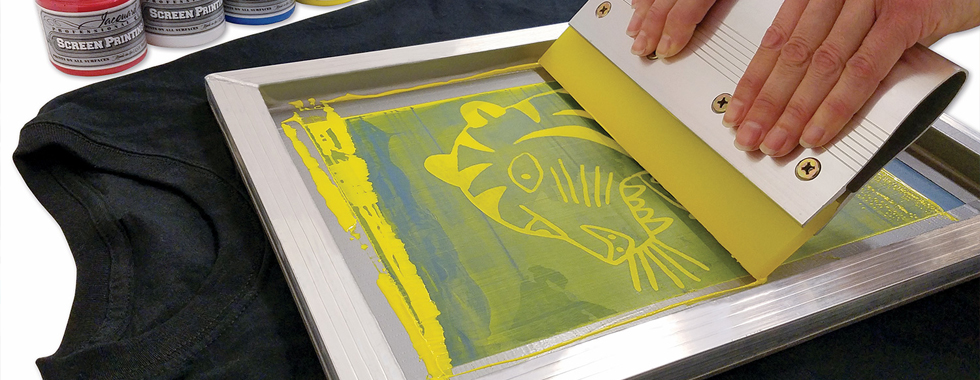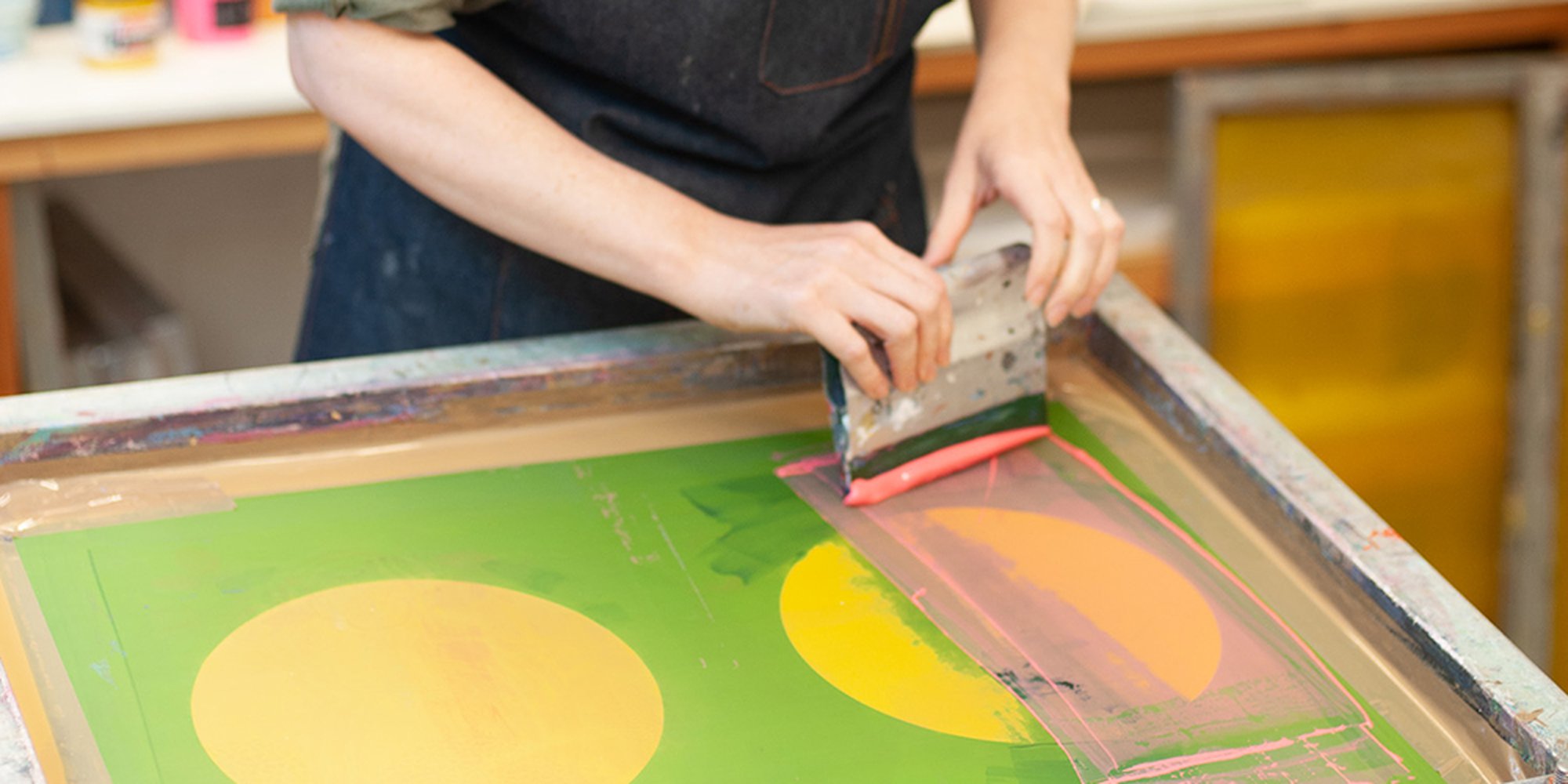ChatGPT said: Why 10:9 Design near me is the most reliable for local customers
The Important Guide to Understanding Screen Printing and Its Versatile Uses
Screen printing has an abundant history that goes back to old times, developing into an innovative technique utilized throughout different markets today. This overview discovers the details of the screen printing procedure, outlining its applications in style, home, and advertising design - 10:9 Design contact. Understanding these basics can open up innovative capacity for both creative and industrial projects. The complying with sections will certainly expose necessary pointers and strategies to boost one's screen printing endeavors
The Background of Screen Printing
Screen printing has origins that trace back centuries, its development shows the imaginative and technological advancements of various societies. Stemming in old China, the technique was at first utilized for decorating textiles and later infect Japan, where it ended up being essential to Ukiyo-e woodblock printing. The approach shifted to Europe in the 18th century, where it obtained popularity among artisans and business printers. The invention of picture solution in the 20th century revolutionized screen printing, enabling even more intricate designs and better effectiveness. Artists like Andy Warhol additionally drove its appeal, utilizing the medium to produce famous jobs that mixed commercialism and art. By the late 20th century, screen printing had actually developed itself as a flexible method, utilized in fashion, advertising, and great art. Today, it proceeds to progress, incorporating electronic innovation and broadening its applications throughout different industries.
The Screen Printing Refine Explained
Screen printing transforms imaginative visions right into concrete designs through a series of exact actions. An image is created and then moved onto a screen, typically made of fine mesh fabric extended over a framework. A light-sensitive solution is put on the screen, which is exposed to light, setting in locations not covered by the image. After washing out the unhardened solution, a stencil is developed.
Next, the screen is positioned over the substrate, whether it be fabric, paper, or one more product. Ink is after that pushed via the open locations of the pattern utilizing a squeegee, depositing the design onto the substrate below. This process can be repeated for numerous shades, calling for different displays for every shade. Finally, the published product is treated making use of warmth to assure the ink sticks properly, leading to a durable, dynamic style all set for usage.
Kinds of Screen Printing Techniques

Additionally, specialty strategies, such as discharge screen printing, eliminate dye from the textile to develop softer prints, while aluminum foil screen printing uses metal aluminum foil to attain a glossy surface (10:9 Design Company). Each method offers unique attributes, providing to different innovative needs and production scales, inevitably expanding the opportunities within the screen printing domain
Applications of Screen Printing in Various Industries

Furthermore, the signs and advertising fields utilize screen printing for developing captivating screens and banners. This technique enables vibrant colors and detailed styles that capture focus. In electronics, screen printing is employed for applying conductive inks to circuit card, essential for component connections. In addition, the home style market welcomes screen printing to create unique layouts on textiles and wall art. In general, screen printing functions as a crucial device across diverse areas, enhancing products with personalized and aesthetically appealing graphics.
Tips for Effective Screen Printing Projects
While embarking on a screen printing task, careful attention to information can significantly improve the last outcome. Initially, choosing top notch products is important; this consists of the screen, inks, and substratums. Making use of appropriate mesh counts can affect ink deposition and information resolution. Preparation is equally essential; extensive cleaning of displays and proper exposure times assure crisp prints.
Next off, precise registration is crucial for multi-color prints. Utilizing alignment tools can help attain exact layering. Additionally, testing prints on scrap materials prior to manufacturing helps identify potential issues without wasting resources.

Regularly Asked Questions
What Materials Are Finest for Screen Printing on Textile?
Cotton and polyester blends are perfect for screen printing on fabric because of their longevity and ink absorption. Additionally, specialty textiles like silk or canvas can produce distinct textures and surfaces, enhancing the general layout high quality.
Just how Do I Tidy and Maintain Screen Printing Tools?
To preserve and clean screen printing tools, one need to regularly clean displays with proper solvents, evaluate mops for wear, lubricate moving parts, and shop all things in a completely dry, dust-free atmosphere to extend their lifespan.
What Are the Ecological Effects of Screen Printing?
Screen printing can have substantial environmental effects, including chemical waste from inks and solvents, water use throughout cleaning processes, and power intake. Environment-friendly products and sustainable techniques are necessary for reducing these adverse effects.
Can Screen Printing Be Done in your home Effectively?
Screen printing can be efficiently done at home with the ideal products and strategies. Hobbyists can develop high quality prints, though success relies on their ability level, equipment, and understanding of the process involved.
What Are the Expenses Related To Starting a Display Printing Organization?

Beginning a screen printing company includes expenses for equipment, materials, and workspace. Preliminary expenses generally vary from a couple of hundred to numerous thousand click here bucks, depending upon the range, high quality of equipment, and preferred manufacturing ability.
Screen printing has an abundant history that dates back to ancient times, developing into an advanced strategy utilized across numerous sectors today. One more method, rotary screen printing, uses round screens, helping with constant printing on material rolls, consequently enhancing performance for massive manufacturings. Additionally, specialty methods, such as discharge screen printing, eliminate color from the fabric to develop softer prints, while foil screen printing applies metallic foil to accomplish a glossy surface. In the style market, screen printing is commonly made use of to develop vibrant layouts on apparel, making it possible for brands to showcase their special styles. Cotton and polyester blends are perfect for screen printing on material due to their sturdiness and ink absorption.